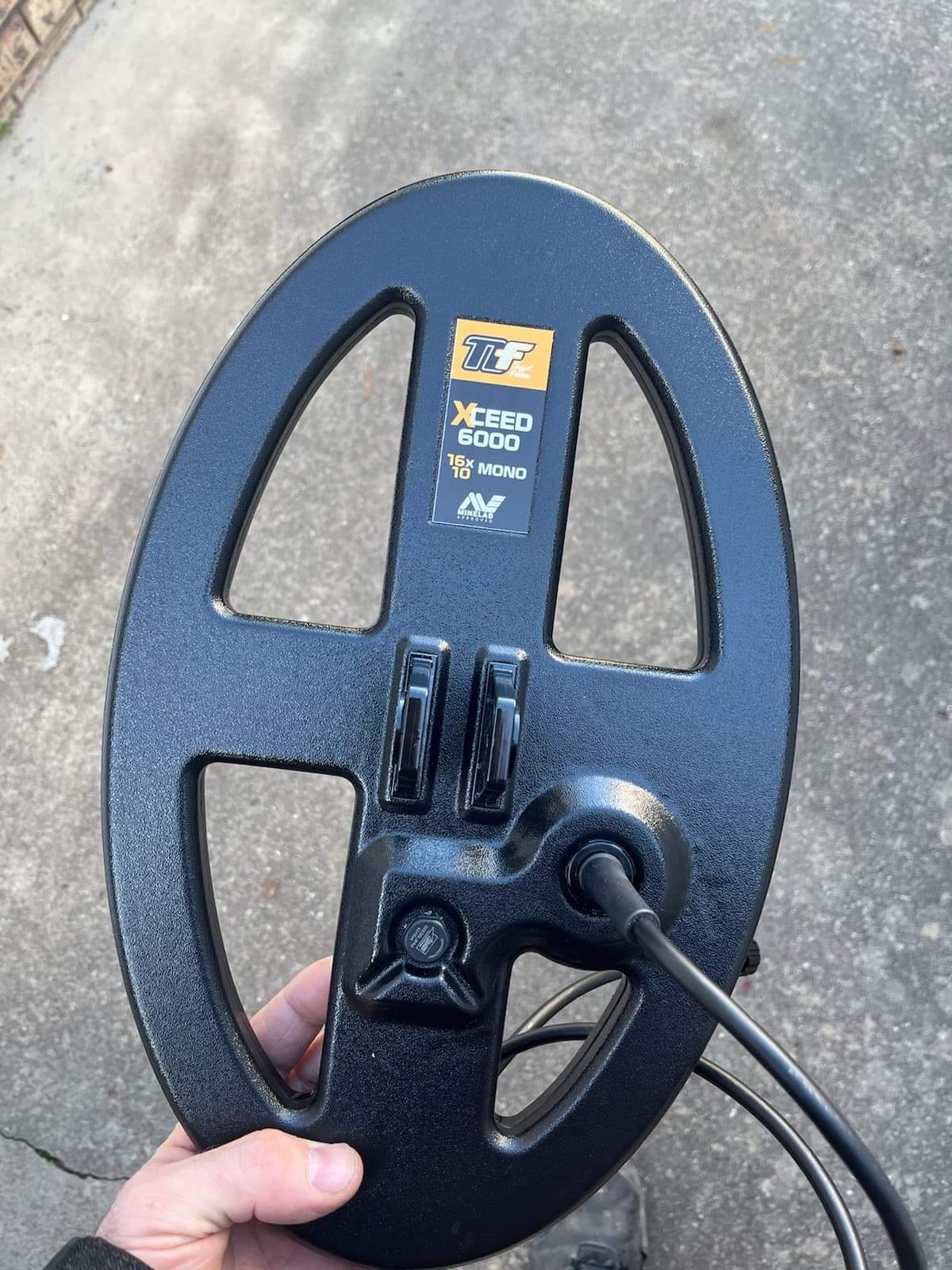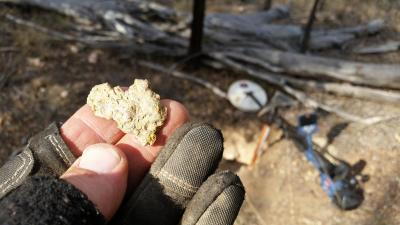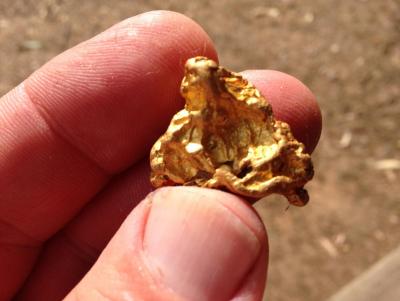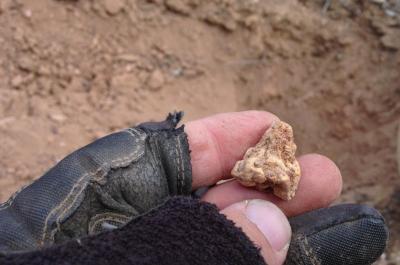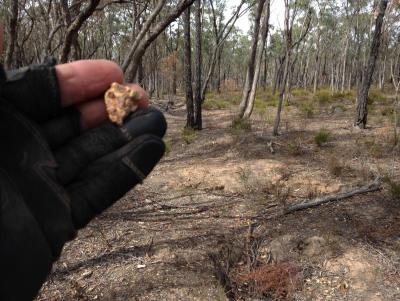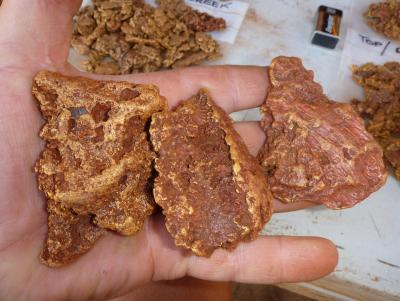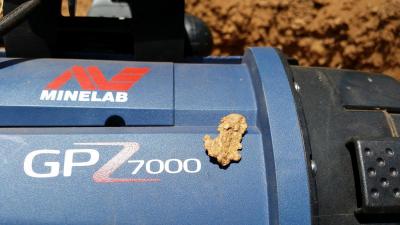-
Posts
1,084 -
Joined
-
Last visited
-
Days Won
35
Content Type
Forums
Detector Prospector Home
Detector Database
Downloads
Everything posted by Jonathan Porter
-
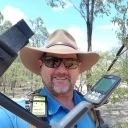
The Passing of a Metal Detecting Great!
Jonathan Porter replied to delnorter's topic in Garrett Metal Detectors
A sad day and a big loss to the very rich history of metal detecting. Condolences to his family and friends. JP -

Minelab Video - GPZ 7000 Gold Mode
Jonathan Porter replied to Steve Herschbach's topic in Minelab Metal Detectors
Phil is right about pushing the envelope with the General Gold mode both in Normal and Difficult, the Go To mode for outright GPZ performance is General. However the Go To mode for the regular finding of gold with the GPZ 7000 will be the High Yield Gold mode as it livens up those nuggets that previous PI machines have missed especially the Fast Time Constant ones, those nugget sizes are more plentiful so will be targeted more often. High Yield offers up superior performance on nuggets up to 15 grams or finely disseminated gold specimens or roughly shaped nuggets, this is very dependent on ground signal response as High Yield can generate more target masking ground noise especially in the Normal Ground Type mode. The sweet spot for High Yield/Difficult compared to General/Difficult for nuggets at depth is around the 8 to 10 gram mark with a marked increase in signal strength, however generally, everything from that size down using High Yield has a much stronger signal strength but obliviously depth decreases proportionally as the size decreases. In a nut shell, each and every target is unique to the transmit/receive of the GPZ particularly when using High Yield, however if you want outright performance/depth on larger gold sizes then General is the far better option, this also will become more apparent when a larger coil becomes available. JP -

Minelab Video - GPZ 7000 Gold Mode
Jonathan Porter replied to Steve Herschbach's topic in Minelab Metal Detectors
I agree the naming of Extra Deep is confusing, Extra Deep will come into vogue when a larger coil becomes available. The mode has similar performance on large nuggets at depth to General but has less sensitivity to small gold and consequently also has less sensitivity to close to coil ground signal responses. This would suggest it goes "Extra Deep" on the larger pieces, especially in problematic ground where the saturation signal could mask a good target. Hope this helps, JP -

Minelab Video - GPZ 7000 Gold Mode
Jonathan Porter replied to Steve Herschbach's topic in Minelab Metal Detectors
The two guys in the video are good friends of mine who are very passionate about metal detectors. Mark Lawrie on the right has spent considerable time with me in the field over the last few years and has found his fair share of nuggets along the way, Phil on the left is scarily bright (both guys are inhuman in this regard compared to my simple two dimensional brain), Phil did the main development work on the Gold Modes and also the Ground Balance Tracker, both of which still blow me away on how refined they are . I personally feel the Product Development guys having a say on the GPZ is a great idea as it gives people a further insight into the detector from the developers point of view, sure its a little stilted but the overall message is still extremely valid. Putting anyone in front of a camera is daunting at the best of times, having them do it unscripted is testament to the amount of passion they have for the GPZ 7000. JP -
Klunker you have "discovered" a good technique, tree roots only signal as the windings are exposed gradually through a side to side motion, I'm pretty certain it is caused by one winding being over or near the root and the other not being over the root, and the coil is reacting to the wet sappy section of the plant (they draw up mineralised water in the gold fields, and therefore are conductive). By approaching with the front of the coil in a push fashion you have exposed both tips of the receive windings to the target and learned it is most likely not a good target. Be careful however because if it is a deep large nugget then the middle of the coil needs to be exposed to get a good response, the Super D coil has to be right over the top of a target to get the best depth possible, it is NOT like a Monoloop coil in that respect. However both windings will respond to a deep target when swept from left to right, whereas the tree root will only be reacting to first approaching winding not both. JP
-
The GPZ remembers its GB position when you go from one gold mode to another, however from a fresh power on state you need to perform the GB procedure as described in the White Paper to be sure the GB is accurate, this procedure is recommended for every Gold mode you intend to use in that session. JP
-
I would not want to hazard too much of a guess on whats happened there, highly unlikely it was a good target unless he hit the Quick Trak. Could be the GB was out from a bad start up balance and then finally got enough info to get rid of the signal, but even then it sounded pretty positive. Best suggestion would be to power cycle the unit or even do a re-set all then detect around the area for a while before coming in over the target again, when committing to dig suggest they fix the GB first. JP
-

Can GPZ Use The CTX Wireless Module?
Jonathan Porter replied to mn90403's topic in Minelab Metal Detectors
I think the WM 12 might work with the CTX 3030 though, as in its backwards compatible, but I've not tired it to find out. JP -
Believe it or not, the biggest problems I've seen with people with the GPZ 7000 are experienced GPX users, those who follow the manual and don't try to GPX the GPZ are fine. The animation Guide on the detector start screen clearly shows the method required, Bruce's White Paper just explains more succinctly the reasons behind it and some very helpful tips on getting that process down pat. JP
-

GPZ Settings Vs. The GPX 5000
Jonathan Porter replied to Rob Allison's topic in Minelab Metal Detectors
Steves right, there is nothing wrong with turning off and on again any time you like or just using the Quick Trak button whenever you feel the need. However I have seen some instances here in Australia where the GB has been messed up (particularly in the variable mineralised areas and more especially with people pumping the coil at the start of a session), follow the recommended work flow procedure and all is good. Work Flow: Turn unit on, do an auto tune and manual tweak if threshold is unstable, with coil held in air and away from metal objects confirm settings are to your liking (Threshold, Gold Mode, Ground Type, Tone etc), select an area typical of your chosen location without trash targets, then with coil held at detection height above ground hold the Quick Trak button in and walk steadily away swinging the coil evenly, after 10 to 12 seconds (listen to the audio during this time and you will hear the unit stabilize) you can release the Quick Trak button. This method is extremely simple to do and should add near zero time to your normal routine, exposing the coil evenly to as much typical ground as possible in that time frame helps immensely with the GB averaging. Edit addition: Please keep in mind, the detector dumps all the collated data at switch off except for the last setting which should be the best anyway, so when you switch back on again you are starting at a very refined position for your chosen area. As Steve has mentioned, in practice most people should not even notice the differences from one session to another unless they go to ground that is very different from last switch off. JP -

GPZ Settings Vs. The GPX 5000
Jonathan Porter replied to Rob Allison's topic in Minelab Metal Detectors
High Yield/Normal is frighteningly powerful but in some cases it can become a handful (most Aussie operators will not have the privilege of being able to regularly use High Yield/Normal), however if the hot rocks do become too bothersome then go to my favourite Normal Gold Mode setting "General" and have an easier time of things whilst still enjoying amazing performance benefits. Another thing of note, you can be more aggressive with the use of the Quick-Trak button in the Normal Ground Type modes, the Normal modes garner a lot more information from the ground even in mild soils than Difficult does so I've found its OK to use it more regularly even if you are operating in Tracking mode. When you trigger the Quick Trak button after doing the initial GB procedure, (I've explained elsewhere on this forum (post # 14) http://www.detectorprospector.com/forum/topic/741-warm-up-for-gpz-7000-some-clarification/ ) the detector from then on performs a loop style recording regime where it very slowly updates certain aspects of its GB data based on what the coil is exposed to over the duration of the session, when you trigger the Quick Trak button you dump the oldest information in that loop, when you power cycle the detector you dump everything except the last GB setting. Hope this helps JP -

GPZ 7000 Recent Finds *got Some Tips From Jp*
Jonathan Porter replied to aussiedigger's topic in Detector Prospector Forum
I'll elaborate more on the suggestions I made to Aussiedigger soon, nothing secret in the settings or anything just simple techniques to get the GPZ purring along in his particular environment. JP -
As has been evident in recent weeks, the subject of Minelab's latest offering garners a lot of highly emotive and oft times erroneous comment, embarrassingly most of the noise comes from my own home country. This post is an attempt to quantify my thoughts, ideas and personal experiences on the subject of GPZ in an attempt to help the genuine people who I really care about and want to do right by. Firstly let me say, I've waited 19 years for the opportunity to see a totally new technology like ZVT to come to the fore, I've known about it for a very long time and have been involved in its development right from the start, so my levels of intimacy with this detector are very acute. A small part of me is intertwined with every detector that Minelab ships, that intimacy is shared with a lot of very special people at Minelab who don't have a public voice but who do have the same connection as me, to those people I want to say thank you for your dedication and hard work in getting the GPZ 7000 to where it is today. The core focus behind GPZ was simplicity, to that end they had to take a VERY complicated technology and make it as simple to use as possible, I feel they have done an amazing job. The GPZ has a lot going on under the hood, the very fact it works so well is a testament to Bruce Candy's genius and the willingness of Codan/Minelab to get behind the technology monetarily and develop it to the level of refinement its achieved in its first iteration, a very expensive exercise in this day and age. Each time I turn the production version of the GPZ 7000 on I just grin in true appreciation, it is gob smackingly good. Even after weeks of exposure I still find myself tingling with delight at its intricacy, I just love listening to it purr, the subtleties of the audio response are music to my ear. Why, you ask, can I wax so lyrical about the GPZ? Its simple, I have unwavering faith in its performance and the people behind the design. I have seen with my own eyes what the GPZ with ZVT can do, I have experienced the subtle grunt of this detector on more occasions than I can count! I know it is "livening up targets" at depths never achieved before by a PI machine, even with the supplied GPZ14 Super-D coil. I know every time I go detecting its just a matter of time and a little patience and I will be tapping into the future success story of GPZ all over again. "Bang......real world"........ The real world does not work like what I've written above, the real world is hard work and perseverance!! The real world kicks you in the proverbial's and screams "GET UP YOU SLACKER!!!" But I have a secret weapon against the real world, I have a weapon I carry with me each and every time I go detecting, its the same secret weapon I've carried with me since I first started out. Its called the human condition, the ability to visualize success and reward, the ability to take on the real world and "get up and stop being a slacker" when the going gets tough. Maybe this is why the release of the GPZ 7000 is such an emotive subject, because all of you have the same monkey on your back, the "Real World" monkey. The GPZ 7000 is what it is, you can either believe or not believe. I believe!!! I'm listening to what the GPZ has to say, I'm all ears to the nuances of its wireless audio stream, and I'm primed for when it livens up a target missed by the PI's!! "The wise old Owl sat in an oak, the more he heard the less he spoke, the less he spoke the more he heard, why can't we be like that wise old bird". No one ever learns anything with their mouth open, me included!!! JP
-

Warm Up For GPZ 7000... Some Clarification.
Jonathan Porter replied to Jonathan Porter's topic in Minelab Metal Detectors
Correct procedure for GPZ 7000 when first starting out for the day after switch off or out of the box.... Switch on detector, adjust Tone and Threshold to suit your hearing/audio delivery devices, select preferred Gold Mode and Ground Type..... then with Quick Trak button "held-in" swing the coil briskly from left to right without scrubbing or hitting the ground and cover as much ground as possible in your chosen location for 5 to 10 seconds, (preferably not swinging over large metal objects), then release the Quick Trak button, you are then good to go. All the people who I have spoken with who are using the GPZ 7000 successfully are following this very simple procedure. JP 20 grams at 23 measured inches, found Monday this week -

Warm Up For GPZ 7000... Some Clarification.
Jonathan Porter replied to Jonathan Porter's topic in Minelab Metal Detectors
You can achieve the same thing by manually moving the Tune control a few points.... give it a try it will save a lot of time. -
I've seen parts of this comment re-posted numerous times now and feel I need to clarify my remarks on the subject of warming up..... (originally posted here http://www.detectorprospector.com/forum/topic/665-my-take-on-the-minelab-gpz-7000/page-2 post 34) When you first switch the GPZ on at the start of a session, the auto GB electronics require the coil to be moved across the ground to get good averaging data to allow the detector to run as smooth as possible, this is over and above the initial GB which removes the bulk of ground signal. This averaging process can take 10 to 20 minutes depending on the ground you are working in and the Gold mode used (especially High Yield). There are multiple components to the GB of the GPZ 7000, removing the bulk of the ground signal noise is only one part of the equation. Hope this explains things more succinctly. JP
-

Over An Hour Of Independent GPZ Video
Jonathan Porter replied to Steve Herschbach's topic in Minelab Metal Detectors
Then your potentially missing out on a huge amount the GPZ has to offer..... It's not a massive learning curve but it does take time to avail yourself of the opportunity of experiencing the full potential of ZVT. JP- 30 replies
-
- minelab gpz 7000
- videos
-
(and 1 more)
Tagged with:
-

My Take On The Minelab GPZ 7000
Jonathan Porter replied to Steve Herschbach's topic in Minelab Metal Detectors
Steve, I asked Frieda to put aside two of the new B&Z boosters for you and Chris (finally), hopefully they'll be posted this week sometime. The new design with the interchangeable lead is a lot better for the GPZ, I'll also include a curly cord for you both which also allows you to attach directly to the detector including the SDC if you prefer. To avoid audio drop outs I attach my WM12 to my right trouser pocket closest to the POD, the curly cord is very good for this situation. JP -

Gold I Found in Victoria With The GPZ
Jonathan Porter replied to Jonathan Porter's topic in Minelab Metal Detectors
My go-to Sensitivity settings for the GPZ are 9 to 12 for Difficult Ground Type mode and 6 to 10 for Normal Ground Type modes. High Yield/Difficult needs to be lower than General/Difficult in same ground types on a specific day, twitchyness in a GPZ manifests differently compared to a 5K so you have to be careful deciding what is acceptable when making the call, my go-to adjustment is the Sensitivity setting when things get difficult, even on low Sens settings the GPZ has oodles of grunt. I've seen and heard of people who are running the Sensitivity way too high in the last couple of days, and then complaining about the detector being twitchy. On the subject of Audio Smoothing: Off on the GPZ = 20 on the GPX 5000, Low equals 15 and High equals 10. I run my GPZ 7000 on OFF at all times. It should take about a day to become familiar with Audio Smoothing OFF, everything has more presence in OFF position but within that presence is a plethora of information that has never been truly accessible on the previous Minelab high end gold machines that came before. JP -

Gold I Found in Victoria With The GPZ
Jonathan Porter replied to Jonathan Porter's topic in Minelab Metal Detectors
Sounds like there is a fair component of salt in your ground down that way, to get less salt signal try the General Xtra Deep/Difficult mode and increase the Gain/Sensitivity to compensate for signal response reduction. Best way to determine Salt is to lift the coil above knee height, if there's a strong signal as you bring the coil away up to knee height and above then salt is present. JP Edited to make things clearer -
Below is a picture of a nice 30 gram piece I found in Victoria during recent field trials..... I only have a basic working knowledge of patches and locations down there so was pretty happy when I plucked this chunk out of a patch I took a crew of Minelab guys to a few years ago on a training session with the GPX 5000, I can assure you all of us had our coils over it at one time or another because it was right in the guts of the main run. Gold mode and Ground Type was General/Difficult, Sensitivity on 12 and Audio Smoothing at OFF. These are the best settings for large deep gold (1 oz+) in the noisy ground in Victoria's Golden Triangle. JP 30 gram slug at a depth of 16" under an old boys throw out heap
-

GPZ 7000 Finds Large Gold Nuggets
Jonathan Porter replied to cobill's topic in Detector Prospector Forum
Here you go, this was part of a three way split and the gold has been sold off. 15 ounce, 14 ounce and 13 ounce pieces found with the GPZ. JP -

GPZ 7000 vs GPX 5000 - Video by JP!
Jonathan Porter replied to Steve Herschbach's topic in Minelab Metal Detectors
Hi Steve, thanks for posting up the link to the video, also thanks everybody for the birthdays wishes it was a pretty busy day yesterday finalizing videos and trying to deal with the inflow of queries through email, FB messages, forum PMs and phone calls, basically speaking I was super busy working in an industry I really enjoy. Steve thanks for keeping this forum clean, as always the grubs come out of the woodwork on the release of a new detector but this time it has seemed more intense and vicious, either that or I'm just over it, either way I'm content to just take a back seat for a while and wait for the genuine people to come to the fore again. By way of background, the video was shot in a well pounded location that initially produced 7 ounces for me back in 1995 with the SD 2000, since that time I've had mixed results but others have been lucky in there from time to time, but overall multiple targets in the main zone have been rare. I am extremely intimate with the location where the 7 gram nugget came from, I've been over that particular ground with every Minelab PI detector since 1995 and also every conceivable coil size and timing combination, it is one of my favourite test locations. A good operator with a 5K working extremely hard and at their peak levels will on occasion get their coil in the precise spot at the right time and score the odd deep piece, this is also very much dependent on interference from local power lines nearby and also an airport not far away. The 15 x 12 Commander mono is the perfect comparo coil, and represents a pretty good size relative to the 14" SuperD coil on the GPZ, if you want to be picky then perhaps the 5K should have been used with a 15 x 12 DD Commander instead but then we would have had to use Normal timings against the GPZ's Difficult mode or maybe I should have shown the sheer grunt of the Normal soils mode of the GPZ and really blown your socks off!!! However in reality the ground is extremely variable in that location and requires the use of a Mono coil on the 5k and the use of Fine Gold or Enhance, and High Yield Difficult on the GPZ. Seeing how Fine and Enhance on the 5K have the same outright depth on large gold, I opted for Fine to cover the best signal response on the smaller gold, these modes are in line with what I would actually use on these detectors when chasing gold for real. In the general area of the 7 gram find I was popping nuggets out everywhere, almost like it was a virgin patch all over again, Ive been over this ground with the 5K using 18" and 20" monos, as well as 16" and 14" rounds, I have also worked this area with DD and mono coils in Normal timings with the GP series machines along with the SD machines, in a nutshell to pull so many gold targets out of such a familiar place sets my pulse racing. I have never ever had such a smooth running detecting experience in this location, I can run Audio Smoothing off on the GPZ, this is like running the Stabilizer on 20 on the 5K!!!! I can also use the General/Normal mode here just like a GP using a DD coil but have the grunt of a Monoloop without excessive ground noise, but why would I put up with ground noises in hot sweaty weather when I can opt for a Smooth/Enhance/Fine Gold type mode in the form of High Yield or General /Difficult and obtain depths that on some occasions have blown an 18" and 20" monos on a 5K out of the water?!! There is so much to tell about this detector after the experiences I've had during testing, its nuances and performance go much deeper than just its "obvious out of the box simplicity". Finally I want to create some distance between myself and peoples purchasing decisions on this detector, the GPZ 7000 is a high end professional instrument and is expensive, your reasons for buying should be based on your own personal choices not on my recommendations, once the dust settles I promise I'll be around to discuss the detectors merits and how to get the best out of the GPZ 7000 with ZVT. JP -

Whites Chance At Minelab?
Jonathan Porter replied to Rick Watkins's topic in Minelab Metal Detectors
I know for a fact it was offered to Whites a long time before the release of the SD 2000 and they knocked it back. It wasn't till the results of Bruce's field testers in Victoria began to filter through to the industry that Minelab finally decided to create the SD 2000 and even then they were caught totally off guard by the massive demand. JP -

My Take On The Minelab GPZ 7000
Jonathan Porter replied to Steve Herschbach's topic in Minelab Metal Detectors
3 to 4 should be OK

